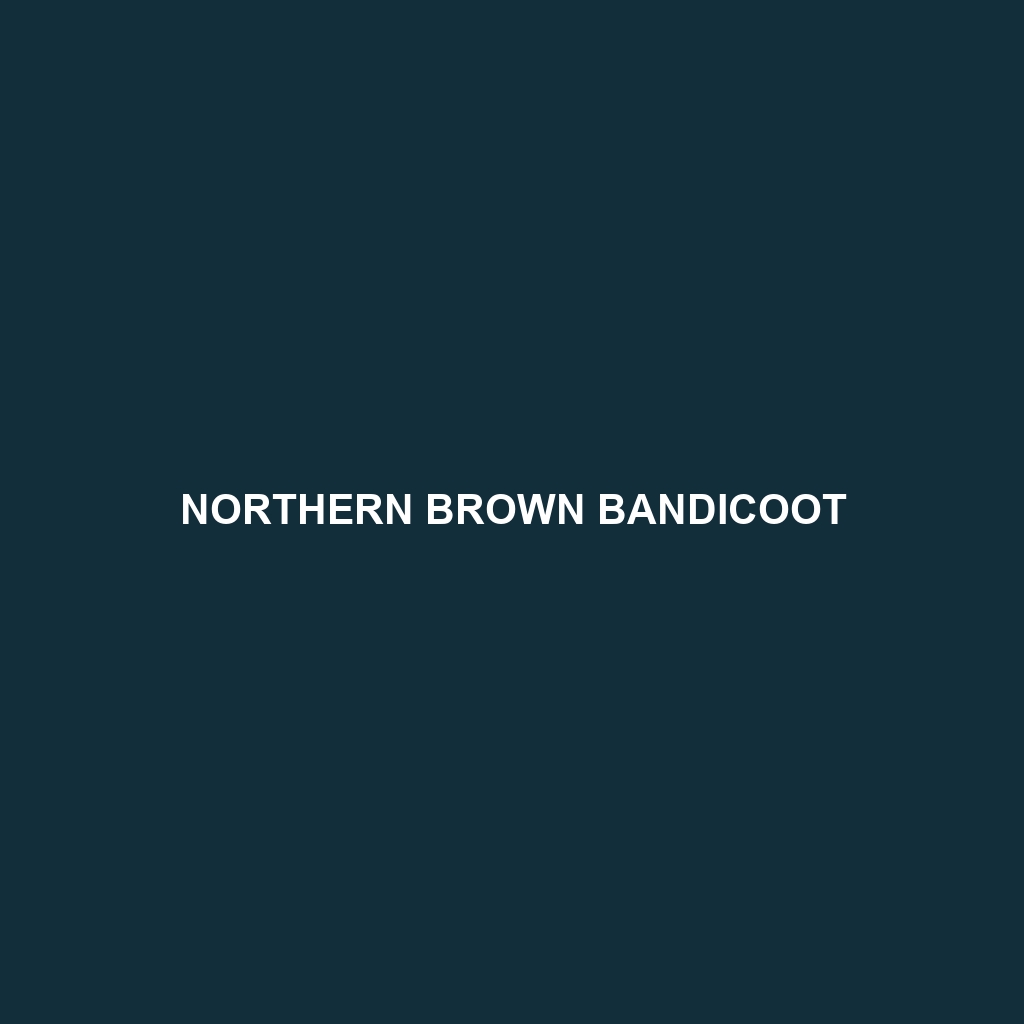Northern Brown Bandicoot (Isoodon macrourus)
:
The Northern Brown Bandicoot is a small to medium-sized marsupial native to Australia and New Guinea. Known for their distinctive brown fur and active nighttime behaviors, these fascinating creatures play an important role in their ecosystems by aiding in soil turnover and seed dispersal. Despite their unassuming appearance, they are an essential part of the ecological tapestry of their habitats.
Physical Characteristics:
Size: Adult Northern Brown Bandicoots typically measure between 28 to 47 centimeters (11 to 18.5 inches) in body length, with a tail length of about 10 to 17 centimeters (4 to 7 inches). They usually weigh between 500 grams to 2 kilograms (1.1 to 4.4 pounds).
Coloration: They possess a coarse and rough fur coat that is generally brown to dark brown on the back and sides, with a paler, sometimes white underside. The brown coloration provides effective camouflage in their natural surroundings.
Special Features: Northern Brown Bandicoots have a pointed snout, small, rounded ears, and strong forelimbs equipped with sharp claws, which are well-suited for digging.
Behaviors:
Social Interactions: These bandicoots are generally solitary animals, coming together only for mating purposes. They maintain individual territories, which they mark with scent glands.
Feeding Habits: Northern Brown Bandicoots are omnivorous with a diet consisting mainly of insects, earthworms, and other invertebrates. They also consume a variety of plant materials, including fruits, seeds, and tubers. They use their strong claws to dig for food.
Ecological Roles: By digging and foraging, these bandicoots help with soil aeration and nutrient cycling. They also aid in the dispersion of seeds, contributing to plant regeneration and diversity.
Habitats:
Natural Habitat: They inhabit a range of environments, including tropical and subtropical rainforests, eucalypt woodlands, and grasslands. They are also found in agricultural areas and urban fringes.
Adaptations: Northern Brown Bandicoots have adapted well to various environments, utilizing their digging abilities to create burrows for shelter and protection. They are nocturnal, which helps them avoid many predators.
Conservation Status:
According to the IUCN Red List, the Northern Brown Bandicoot is currently classified as Least Concern due to its wide distribution and adaptability. However, local populations can be negatively impacted by habitat destruction, predation by introduced species like cats and foxes, and vehicle collisions.
Fun Facts:
Female Northern Brown Bandicoots have a particularly well-developed pouch that opens backward to prevent soil from entering while digging.
These bandicoots have a remarkably short gestation period of about 12.5 days, one of the shortest among mammals.
Despite their solitary nature, male bandicoots will fiercely compete for the attention of females during the breeding season.
The Northern Brown Bandicoot is a resilient and crucial component of its ecosystem, offering a glimpse into the unique dynamics of Australian wildlife. Through understanding and protecting these creatures, we can ensure the health and diversity of their habitats for generations to come.
